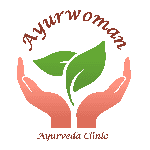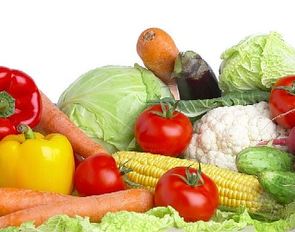Ayurveda Diet
Following an Ayurveda diet is essential if you are going through an ayurveda treatment. An Ayurveda diet will work as a catalyst positively influencing the treatment progression. An Ayurveda diet is crafted based on your dosha constitution. It also takes into account dosha imbalances that are actively involved in the illness that is being treated.
If you are not undergoing an Ayurvedic treatment program, then Ayurveda recommends that you follow a diet based on your dosha constitution.
Read on if you would like to know more about how to apply knowledge of your body type in creating an ayurvedic diet plan for yourself.
What is an Ayurveda diet
Ayurvedic diet is conceptually simple. It is not a weight loss diet. It is not a diet that will make you live for ever. But Ayurvedic diet is a diet that will optimise your health. It will keep you healthy.
Ayurvedic diet is not a one-size-fits-all diet. It requires customisation to match one’s ayurvedic body type or dosha constitution of an individual. In summary, eat according to your ayurvedic body type. Increase consumption of those foods that are compatible with your dosha type. Reduce or completely avoid those foods that are not compatible with your ayurvedic body type.
So, to follow an ayurvedic diet, it is essential that you discover your body type. Unlike diagnostic devices used in modern medicine, there is no electronic device to objectively and accurately determine your body type. Ancient texts mention lot of rules and techniques. To get the dosha combination accurately, it requires lots of practice. An expert practitioner will be able to apply these rules with required objectivity and subjectivity to an individual’s situation. The experience and wisdom of an ayurvedic practitioner is essential in determining your dosha constitution more accurately.
So, we at Ayurwoman will strongly recommend seeking the services of an ayurvedic consultant to determine your body type.
Building blocks of an ayurvedic diet
In short, every human body comprises three doshas – vata, pitha and kapha. In extremely rare cases, these doshas will be balanced and will be present in an almost equal proportion. But for most individuals have one dominant dosha or may have two dominant doshas. Thus you may find a Vata person, a Pitha person or a Vata Kapha person. This classification is the first step in deciding an ayurvedic diet.
Next is to find out which foods respectively aggrevate and alleviate specific doshas ? Rather than doing a trial and error and researching, seek services of an ayurvedic consultant for a thorough diet chart. Your dosha composition, seasonal variations and your tolerance levels to certain types of foods are very important in deciding a diet plan.
Let me illustrate this with an example. Let us say lot of people like yogurt. As per ayurveda theory, some people can benefit (compatible with their dosha constitution) by consuming more yogurt. For some others, it may have a neutral impact. For some others (incompatible), consuming yogurt may have negative consequences. These negative consequences may not be impacting instantaneously. But ayurveda theory says that consuming incompatible food overtime creates accumulated toxins in your body and over time can trigger diseases. So, as in this example, consume yogurt if it is compatible to your body type and get positively benefited. And if yogurt is incompatible, avoid it totally.
Ayurvedic diet body type ?
Finding out your ayurvedic body type (dosha) is easier said than done. There are numerous quizzes and questionnaires online which will predict your ayurvedic body type. Feel free to try them. However, your best source is an Ayurvedic practitioner. An Ayurvedic practitioner’s experience is essential to eliminate false alarms. An Ayurvedic practitioner’s wisdom can differentiate between close and similar symptoms.
What to do after you determine your body type ?
Again, using common sense and using DIY principles you can create a set of do’s and don’ts. However, it is always good to seek help from an Ayurvedic practitioner for a customised Ayurvedic diet chart. A professional Ayurvedic diet chart by an Ayurvedic practitioner will cater for seasonal variations and specifics based on the country and the region were you live.
How do you implement your Ayurvedic diet ?
Changing any habit is difficult. So is changing you eating style. Avoiding things you love and starting to eat something that you don’t love may take some practice. But it will pay off in the long run. If your diet chart says avoid a certain kind of food, start the journey by gradually reducing the intake and over time exclude it from your diet.
Why Ayurvedic diet ?
In simple terms, Ayurvedic diet is the diet compatible to your body. If you eat incompatible food, Ayurveda calls it production of toxins in the long run. These toxins develop simple and complex illnesses. This is the base concept used in many Ayurvedic treatments where the therapy starts with a detoxification or cleansing.
Philosophy of Ayurvedic diet
Ayurveda is a combination of philosophy and science that takes into consideration the mental, physical, emotional, and spiritual components of health. Ayurveda is a complete system that has been able to not only maintain the good health of millions of people over thousands of years that it has been in existence, but it has also been able to cure many diseases that modern science has failed to cure. The amazing thing about Ayurveda is that it works in very simple ways using the common foods that are available around us.
Ayurveda has only come to Western attention as from the 1960s. And it is only now that it is gaining wider recognition as people come to realize how powerful it really is. According to Ayurveda, health is achieved by the harmonious balance of the body, the mind, emotions, behavior, and the environment. The balance of all these aspects of our life is the one that results in good health. Therefore, you cannot simply associate obesity with excessive eating and ignore all other factors.
Several things cause a person to be out of balance. Most of these things do not just happen in an instant or even on a short term. Being out of balance can be the result of being out of balance of nature in various ways for an extended period.
What is an Ayurvedic diet
An ayurvedic diet is a predominantly vegetarian diet and gives considerable importance to medicinal or healing properties of the food we eat. This is especially true in treating issues such as Irritable Bowel Syndrome. Ayurvedic diet theory believes that everyone should eat wholesome food which is also compatible food to their respective body type or dosha type. Good food keeps the body and mind balanced at all levels. Especially in today’s world where there is lot of curiosity about healthy diet such as diet for specific illnesses, an ayurvedic diet can fit in very well with ayurvedic treatments.
Food should nourish and pacify us from within.
According to Ayurveda, food has three parts and accordingly three synchronous effects. The main part is what is consumed by the body (metabolism) and is excreted. The subtly visible part referred to as rasa in Ayurveda, is used in making of basic body tissues such as muscle and bone. The subtly invisible part contributes to nourishing the mind.
Eating to satisfy the sensation of our palate while ignoring the finer aspects of food, creates a variety of health issues. This concept in a way explains the genesis of what we call lifestyle disease these days.
Ayurvedic food types
Ayurvedic diet is truly a total wellbeing diet. Ayurvedic food types are classified based on how they are absorbed by the digestive system. They are soft food and hard food. Soft foods are the ones which are absorbed easily into the system whereas heavy food experiences delayed digestion and absorption.
Soft food
Ayurvedic diet theory classifies plant based food as the ones which are easily digestible. They are easily absorbed into the digestive system. They are alkaline foods and contain more fibre. People who eat a vegetarian diet of soft foods run a lesser risk of heart disease and colon cancer.
Heavy food
Red meat, dairy products, fried food and processed foods are classified as heavy foods in ayurvedic diet theory. Their post digestive nature is acidic. Increased consumption of heavy food will result in the delayed digestion and absorption. This leads to over nourishment disorders like diabetes, obesity, cardiovascular diseases, cancer, acid peptic disease and damage to the protective sheath of neurons.
What to eat and what not to eat?
Not only the nature of food but also the quantity and timing of food are important to have a healthy life. Imagine your stomach has four chambers. Leave one of the four chambers empty for fluid and air during each meal. This will be better for digestive movements and increased absorption.
Over indulging of vegetarian food is also not advisable as per ayurvedic diet principles.
When to eat and how much to eat?
Untimely food will produce or trigger certain diseases. Ayurvedic diet planning necessitates timely food in the required quantity for different age groups.
One such example will be that dinner should be eaten before kapha time. This is approximately 3 hrs before bedtime.
Interactions between different types of food and ayurvedic diet
Theory of ayurvedic diet calls incompatible foods as virudhahara. Avoid incompatible foods as much possible. Virudhahara or incompatible food can cause various diseases. Such incompatible food may react each other and produce toxic substances in the body.
Eg: milk and fish, pulses and milk, meat and yoghurt, potato and yoghurt, oats porridge in milk and orange juice
People who consume these types incompatible foods frequently for a long time are more prone to get food allergy, auto immune diseases, skin disease and degenerative diseases.
Constitutional diet plans
People change their diet for many reasons. Some people who give up meat products believe that vegetarian food or an have better health benefits. Some would also fear that meat could be contaminated with hormones and the animals would have been treated by antibiotics or other drugs.
Seasonal diet and purification
Seasonal diet plan and purification therapies are very significant in preventing seasonal diseases.
This is because a vata person will get more vata diseases during the wet and rainy season. A pitha person is likely to get pitha aggravated disease during the scorching summer season. An earthy or a kapha person will get kapha diseases during the autumn and winter season. If the three doshas are in a state of equilibrium people would never suffer from any disease. According to Ayurveda, our body, mind, health and diseases are the product of the food we consume. It is essential to follow certain basic principles regarding food intake to keep diseases away.
What is your ayurvedic diet
Ayurvedic diet is not a general diet. It is a customised diet and is based on your body constitution. If you are looking for a total wellbeing diet, get in touch with an ayurvedic practitioner. They will assess your body type, identify your dosha combination and will recommend an ayurvedic diet suitable to your situation.
If you are undergoing ayurvedic treatment then your ayurvedic practitioner will recommend an ayurvedic diet plan to go with the treatment. Here the ayurvedic diet plays a dual role. Some parts of the diet act as a catalyst and improve the treatment efficacy. While others that are likely to negate the treatment benefits will be taken off from your ayurvedic diet plan.
If you have any questions on ayurvedic diet plans please feel free to contact us via email, phone or by filling up the contact form. We will be only very happy to assist you with your query on an ayurvedic diet.



